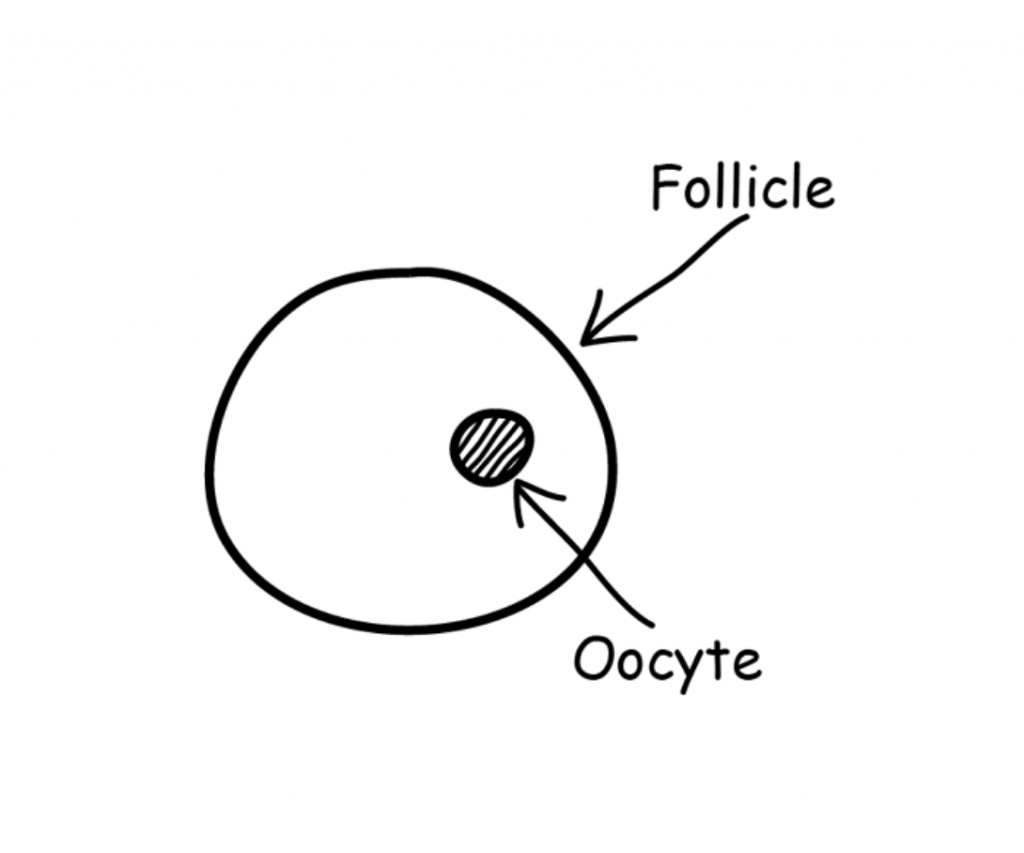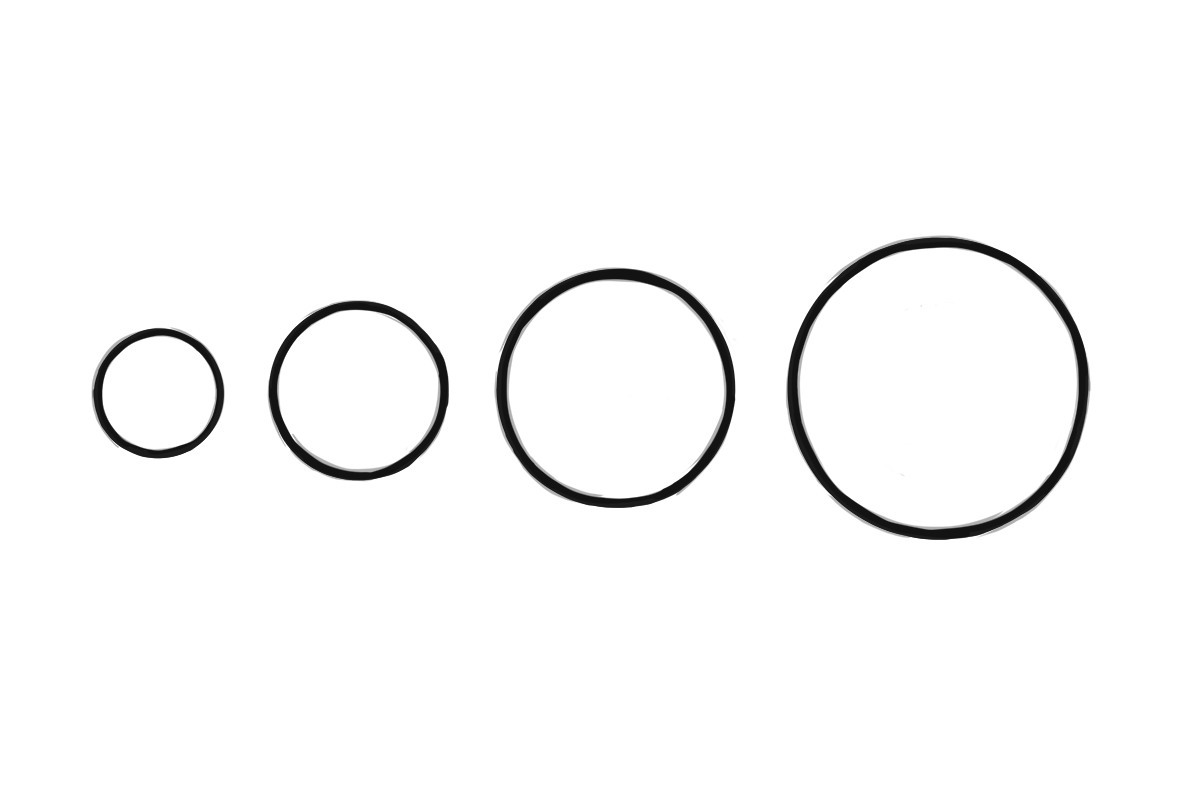WHEN YOU BEGIN FERTILITY TREATMENT, IT'LL BE “FOLLICLE THIS, FOLLICLE THAT, FOLLICLE THE OTHER.”
But then suddenly, as if out of nowhere, your doctors will drop the word from their vocabulary and start banging on about “eggs” instead. It’s like “follicle” suddenly became politically incorrect, and they decided that “egg” was the inoffensive alternative.
Except it’s not like that at all.
So… what’s the deal with follicles, oocytes, eggs and zygotes?
Inside your ovaries are hundreds of thousands of follicles – and most of those follicles (about 90% of them) contain something called an oocyte (“oh-iss-site”), which is an immature egg cell.

During a “normal” menstrual cycle, some follicles will begin to grow and develop at the same time – and the oocytes within the follicles will develop too. One follicle (called the “dominant follicle”) will break ahead and start to grow much faster than all the others.
Once that follicle reaches about 15–24mm in diameter, the oocyte inside it is pretty much ready to be fertilised.
But before it’s fully ready for fertilisation, that oocyte needs to break free from its follicle and make its way somewhere that the sperm will find it.
Various hormones will inform the ovary that it’s time for the oocyte to be released, and at that point the oocyte will complete its “maturing” process through a process called “meiosis”. It will burst out of its follicle and leave the ovary. Now called an “egg” (or “ovum”, for those who like a bit of Latin), it will travel down the fallopian tube, ready to be fertilised by sperm swimming towards it.

If the egg is fertilised by sperm, it’s now called a “zygote”. The zygote contains all 46 of the chromosomes needed to become a fully fledged human, and it will continue to travel down the fallopian tube before coming to rest in the uterus.
So there you have it:
- A follicle contains an oocyte.
- An oocyte is an immature egg cell.
- The oocyte will eventually break free from the follicle and travel down the fallopian tube – at which point it’s called an egg (or ovum, if you’re that way inclined).
- Once the egg gets fertilised by the sperm, it’s a zygote.
- If the egg doesn’t get fertilised by the sperm, it’s still an egg.

How does all this differ from an IVF cycle?
For the purposes of this article, not much. You’ll still have follicles that will be stimulated (this time with hormone injections rather than your own hormones), and those follicles will still contain oocytes.
The only differences are:
- The aim with IVF is to produce LOTS of dominant follicles – each of which will contain an oocyte.
- Once a bunch of these follicles are the appropriate size (as measured on those lovely transvaginal ultrasound examinations you need to have every five seconds), you’ll be given a “trigger” injection to bring about ovulation. But before the oocytes actually break free from their respective follicles after the injection, doctors will go into your ovaries and retrieve the oocytes (now called “eggs”) themselves.
- Fertilisation will take place in the lab – i.e. not your fallopian tube. Any eggs that are fertilised successfully are now called “zygotes”. (Until they become “embryos”, but that’s a whole other story.)
This is all HUGELY simplified, by the way. I could get into a discussion about “secondary oocytes”, but I’ve chosen to save your (OK, my) sanity.

Questions to ask your doctor at every stage of IVF treatment: free downloadable guide
IVF isn’t just overwhelming; it can also be a mind-boggling and sometimes terrifying experience because there’s so much to learn and so many rules to follow.
Problem is, doctors are busy – and they often don’t have the time to anticipate your concerns and provide all the information you might need.
This downloadable guide contains questions that will help you understand the process better, get the answers you deserve, and feel more in control of the situation (and your rights as a patient).
Enter your email address to receive it right away.
I won't send you spam. Unsubscribe at any time.
Well I don’t know about you, but my doctor never uses the words “oocyte” – or even “zygote”, for that matter
Mine neither: “egg” was used pretty much as soon as the follicles had grown to a noteworthy size. I’m guessing that’s just to keep things simple.
Why do they measure follicle size on the scans if it’s all about the oocytes?
Your oocytes can’t be seen on the scan because they’re microscopic in size, so the size of the follicle is used as a proxy.
Why do they need so many different words for things that are essentially the same? A man doesn’t need to change his name as soon as his balls drop
I’m sure the doctors have their reasons.
(Also, I could make the case that a “boy” becomes a “man” once his balls drop… Not sure I want to have that argument right now, though.)


